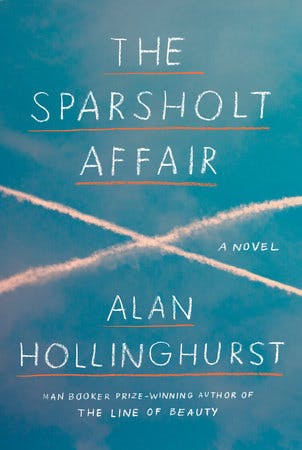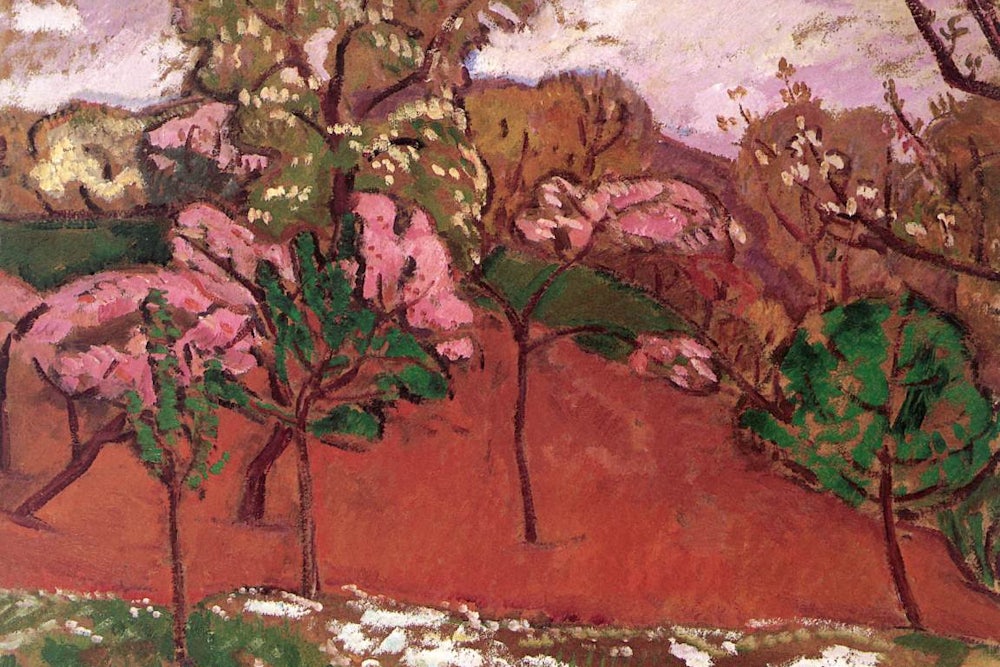Alan Hollinghurst has tricked me again. He did it with The Swimming-Pool Library (1988), The Line of Beauty (2004), The Strangers Child (2011), and now he’s done it in The Sparsholt Affair. Each of these novels begins in an upper-class English milieu. Brilliant young men drift through Oxford or an Oxford-flavored place on tides of erotic glamour and intellect. In The Line of Beauty, Hollinghurst’s cementing achievement, it was Nick Guest cruising the post-uni abundance of Tory London in the 1980s. In this new book, a narrator called Freddie Green twiddles china in charming 1940s Oxford, setting out his “best Meissen cups.” We meet his friends Evert, the “new man” Sparsholt, and Peter the charming painter.
In every one of Hollinghurst’s major novels, he begins with this romantic vision of a gay, aristo-ish Englishman. Some readers might like this sort of tweedy fantasy, but to me it smacks of Downton Abbey and its peddler of nostalgia, Julian Fellowes. In a more generous reading this style calls back to E. M. Forster and the brilliant start of The Longest Journey (1907). That book opens with a group of Cambridge youths discoursing prettily on the existence of a cow on a riverbank. Is it there when they’re not looking at it, or because they’re looking at it? One of them wonders, “What do our rooms look like in the vac?” The boys are solipsists held together by queer currents and the joys of deep thought.

Each time that he starts with the Forsterian tone I worry that Hollinghurst has fallen for historical romance, the prettiness of an exclusive past, a time when it was delicious to kiss boys in cupboards between tutorials or whatever. A fauxstalgia. But just as the nausea hits, Hollinghurst cracks time open. The Line of Beauty’s 1983 blooms out onto 1986, then 1987. We are not stuck after all in some frozen moment, but instead following a heart as it moves through history: politics, class, AIDS.
Time itself becomes a salutary hammer. The Sparsholt Affair begins among Oxford’s dreaming spires but we do not stay there. Instead Hollinghurst uses that opening section as an origin point, like a dry little bulb that will later sprout tulips of consequence. There’s no lesson exactly, except the old one from Forster: Life is not a sequence of built intentions, but of blooms where hearts connect.
It turns out that Freddie Green’s reminiscences about a romance between his friends Evert Dax and David Sparsholt were just that—an old document written down years later for The Cranley Gardens Memoir Club, aka the Memo Club. As the novel pivots to the 1970s, Green all but falls out of the novel and Jonathan, or Johnny, becomes the book’s center. He is the son of David Sparsholt, and when we first meet him he is on holiday with his parents and a French boy who no longer returns his romantic overtures. Johnny is in agony, but as readers looking over his shoulder at the past generation we can tell that something strange is going on with his father and a man named Clifford Haxby.
Johnny goes on to become a trainee art restorer. One day he arrives at Evert Dax’s house in Cranley Gardens to deliver a painting. He’s unaware of Evert’s connection to his father at first—in fact, the “Sparsholt Affair” that concerns Johnny is a famous scandal involving his father and an MP, not the fling at Oxford between David and Evert. But the Memo Club gathered there absorbs him. There’s a pretty boy named Ivan, a collection of wise and large-minded older people. He can sit and draw.
Under the tutelage of a girl named Francesca (daughter of Iphigenia, a Club stalwart), Johnny’s young life expands into queer late ‘70s London. In an extraordinary club scene, he and her gang have to eat a salad between drinking and dancing because the licensing laws demand it. Johnny waits at the bar and in the mirror behind it “he could barely see himself between the optics and ranged bottles,” but he is becoming clearer to himself anyway. He learns the joy of “beautiful, warm hard muscle under the thin T-shirt,” getting hard on the dance floor in spite of himself.
The Sparsholt Affair dogs Johnny throughout his life, as he becomes a painter in his own right. We never quite learn the substance of the Affair, but it is always there, a stain. David Sparsholt has a military gait, his son observes, and he stays strong and muscular to the end. He notes under his “silver hair and turned-up collar of the sheepskin jacket, the suggestion, even now, of an impulse to march subdued to the civilian briskness of his walk.” The past marches, too, always just behind us.
The joy and pain of The Sparsholt Affair is in revealing the locking and unlocking of secrets across generations. There is also the extra beauty, so peculiar in fiction, of intergenerational connections between gay people. Families are chosen and unchosen. Grief comes whether the characters like it or not. As in The Line of Beauty, the instants of loveliness are what make the world.
In those instants Hollinghurst affirms his place as a stylist who breaks out, every time, from the prison of his book’s openings. The joy he takes in life’s small shards of beauty don’t feel like a wordsmith’s performance but instead like the joy of life itself. When Johnny and his French friend Bastien play in the sea as teenagers, the unpremeditated elation of their bodies is like a series of arrows into the heart. “Larking in the water, dragging each other down, just the edge of panic once from Bastien, he disguised it in two seconds, jeered at Johnny as he pulled himself to him, an arm around his neck, and Johnny, in a dream, without thinking or asking raised his legs and circled Bastien’s waist with them.” The boys laughed, they “gasped in each other’s faces,” they kissed. “‘Salope!’ said Bastien, and laying the flat of his hand on top of his head, pushed him under.”
Why does Hollinghurst always start with the fossilized remains of England, only to crack it open and find the living future hidden inside? Perhaps it’s what he knows—and loves—best. He went to Magdalen College himself, and his thesis was on Forster, L. P. Hartley, and Ronald Firbank. If those were the writers that held his emotional attention as a young man writing into a new self—as Johnny paints himself into being—then it makes sense that he would forge a connection between himself and them.
Hollinghurst’s oeuvre acts like a bridge for culture, as well. He takes up the gayness of England past and connects it to the gayness of life now. For anyone whose relationship to that past is fraught, or even tortured, Hollinghurst’s books can initially feel stifling. But as the realization dawns a third of the way through that Hollinghurst is on the side of life, not an airless past, the walls start to come down. Time passes and people die. The instants of pure splendor are what make life livable, make it writable. The Sparsholt Affair affirms them, again.
